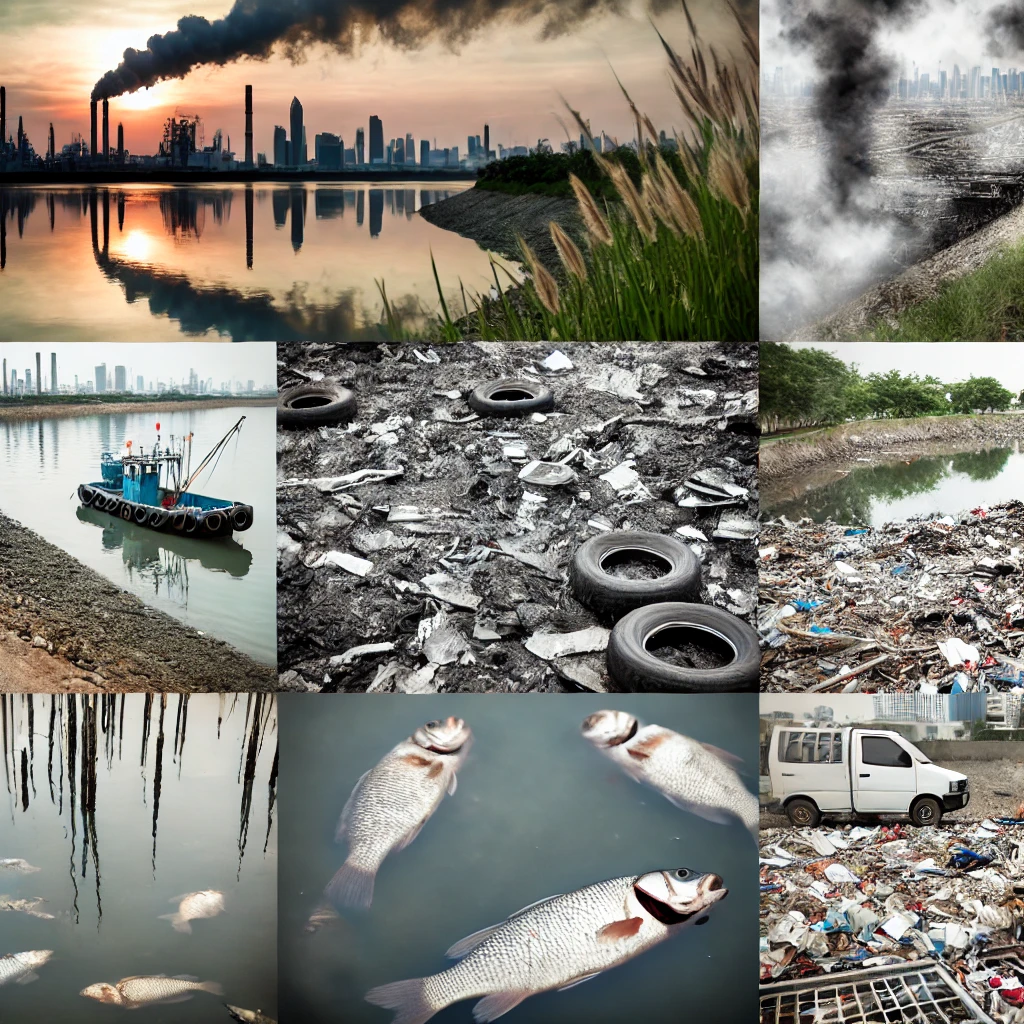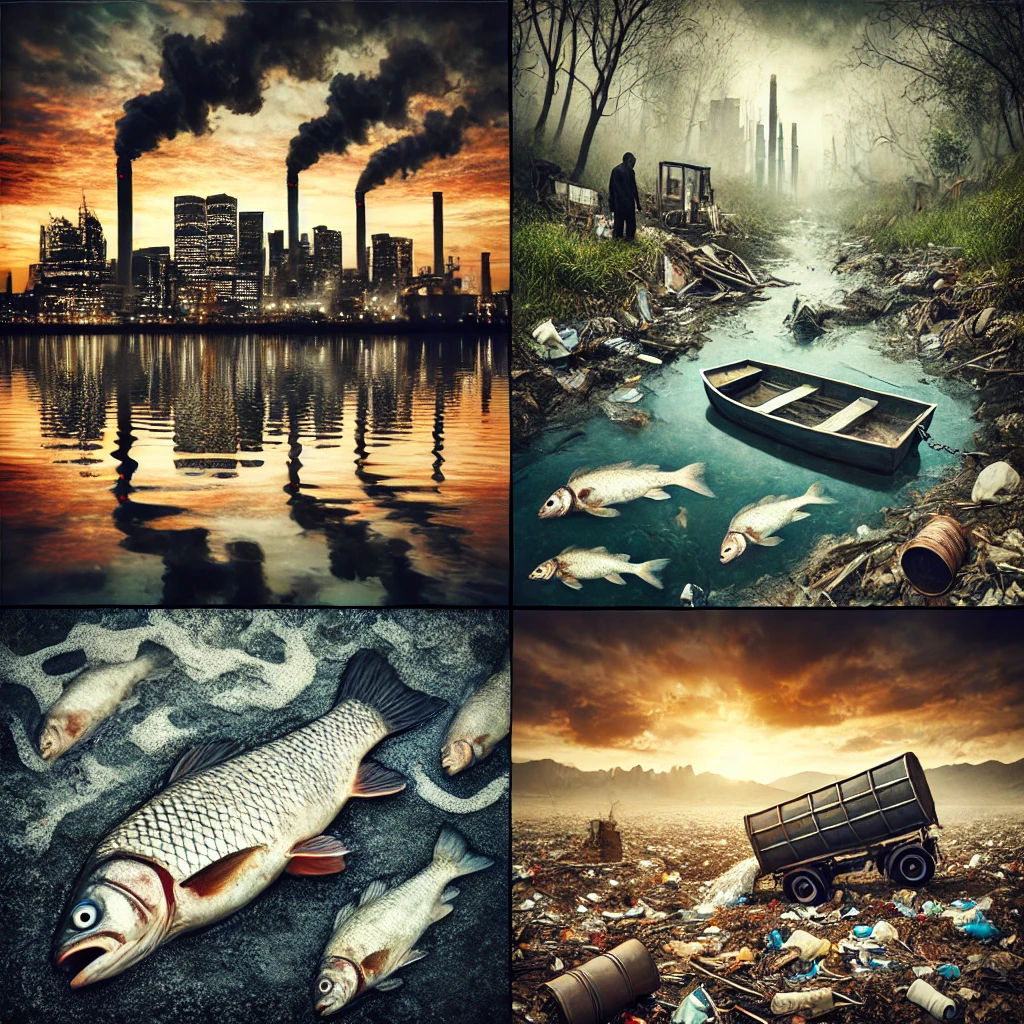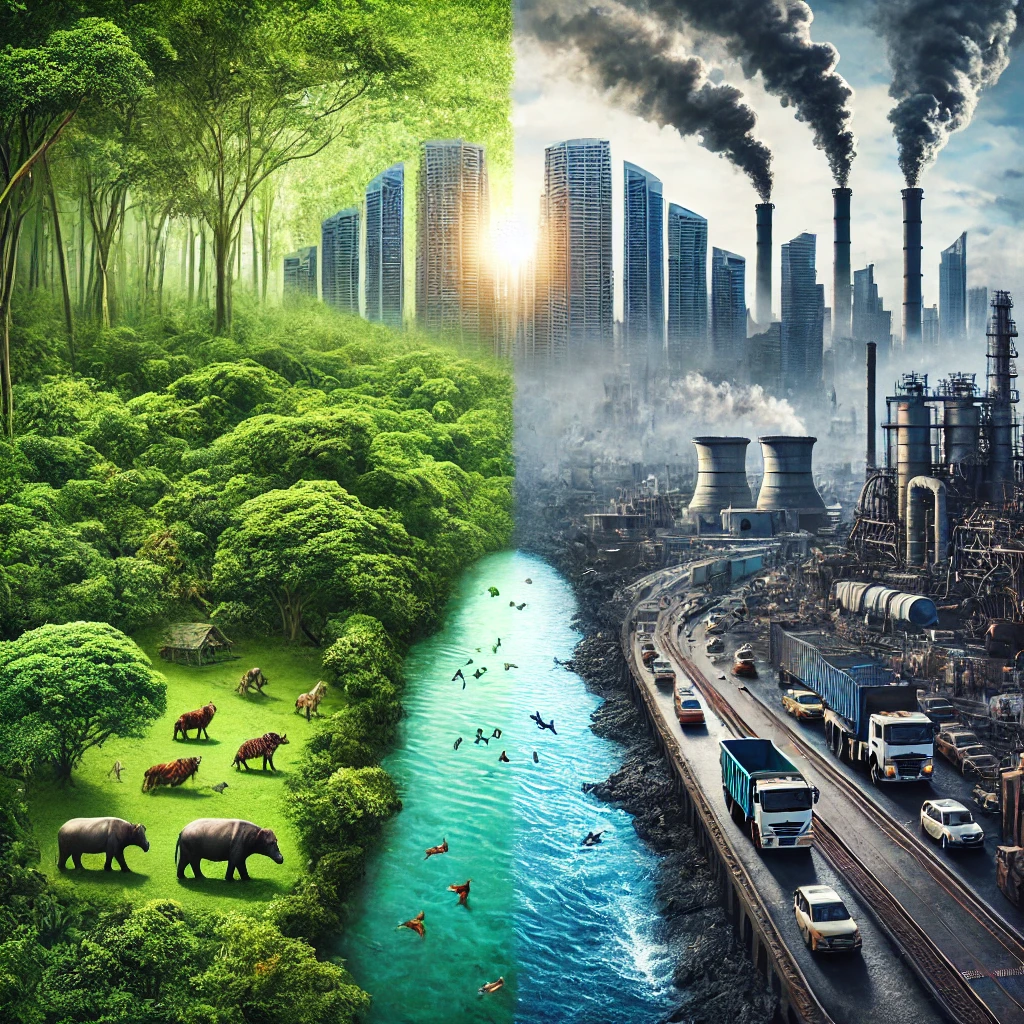Environmental pollution is one of the major global issues facing our generation today. It is soaring with rapid industrialization, urbanization, and human activities and now causing havoc in the ecosystems and health environment. It affects everything water, air, or soil, and only worsens it in every aspect. This is not a problem of just the locality but a global crisis affecting the biodiversity and welfare of the whole living organisms on this earth.
- This pollution is due to factories and industries, which causes air and water pollution.
- Vehicles pollute much with harmful gases present in the atmosphere.
- Soil and water contamination follow due to incorrect waste disposal.
- Excessive plastic use creates non-biodegradable waste that threatens marine and land life.
| GS Paper | GS Paper III |
| Topics for UPSC Prelims | Types of Pollution, National Air Quality Monitoring Programme (NAMP), Basic concepts: Eutrophication, Smog, Acid Rain, Renewable energy as pollution mitigation strategy |
| Topics for UPSC Mains | Causes and effects of Environmental Pollution, Government initiatives, Legal frameworks, Impact of pollution on human health and agriculture |
Causes of Environmental Pollution
Environmental pollution originates from numerous human activities that disrupt the balance of nature. These actions lead to emissions and waste, which makes the environment dirty. Some of the primary causes are discussed below:
Industrial Pollution
Industrial activities are one of the most significant sources of environmental pollution. Factories have polluted the air and water through smoke, chemicals, and wastes. Therefore, they contribute either to air pollution or water pollution. Such pollutants cause various environmental and health problems that affect human health through respiratory disorders, among other effects, as well as harming ecosystems.
Agricultural Activities
Agriculture represents the other critical source of environmental pollution primarily through pesticides, fertilizers, and chemicals. These assume the form of runoff into water bodies and have been shown to pollute rivers, lakes, and groundwater. Just like that, such a type of pollution also degrades soil quality, with the land eventually becoming useless in the long term for agriculture use.
Vehicular Emissions
Mass municipalization has resulted in the increased utilization of private vehicles, thus marking vehicular emissions as the most significant source of air pollution. Carbon monoxide, nitrogen oxides, and sulfur dioxide are harmful gases emitted through cars and trucks, thus causing unfresh air. This problem is further added to by the rising use of personal vehicles in populous cities.
Waste Disposal
Inappropriateness in the disposal of wastes; and especially that involving plastics also causes great contribution to the land pollution. The non-biodegradable type of plastic chokes waters, poisons the wildlife, and even takes hundreds of years to dissolve. In addition, the poisonous industrial waste is merely left to pile up in landfills and not treated in any way; hence, it contaminates both lands and waters more harshly.
Deforestation
Deforestation contributes significantly to aggravating environmental pollution. Trees, by their natural processes, absorb carbon dioxide from the atmosphere and their removal leads to the increase in concentrations of greenhouse gases. Deforestation also disrupts the ecosystem, causing species extinction and alteration of the natural landscape.

Forms of Environmental Pollution
There are varied forms of environmental pollution, all aimed at the different aspects of nature. Some of the most prevalent forms include:
Air Pollution
Air Pollution Air pollution refers to the release of harmful gases, dust, and smoke within the air. Vehicles, industries, and households burn fossil fuels and release enormous amounts of carbon monoxide, sulfur dioxide, and nitrogen oxides into the air. These pollutants cause respiratory diseases and contribute to global warming.
Water Pollution
Water pollution forms a huge menace to aquatic ecosystems. Rivers, lakes, and oceans are polluted by industrial wastes, sewage, and agricultural runoff containing chemicals. This pollution leads to death of marine lives, unhygienic means of drinking water, and creates diseases like cholera and dysentery.
Soil Pollution
Improper disposal of industrial wastes, overuse of pesticides and fertilizers, dumping plastics and other non-biodegradable materials has resulted in primary causes of soil pollution. Soil pollution reduces soil fertility, affects food security and contaminates crops with harmful chemicals.
Noise Pollution
Noise pollution is very high in cities and towns having thick traffic, construction work, or any type of industrial activity. Continuous exposure to such a high level of noise affects the psychological aspect of a person, leading to stress and anxiety conditions. In severe cases, it can even cause deafness or heart problems.
Light Pollution
Light pollution is the improper excessive use of artificial light, particularly in cities. Such a form of pollution affects ecosystems by its effects on animal behavior and disturbance of the nocturnal environment of living organisms. Moreover, human sleep patterns are somehow affected and so is general health.

Effects of Environmental Pollution
The impact of environmental pollution is broad and cuts across both natural and human ecosystems. The impacts of such pollution are diverse, countless and, in many cases, mutual.
Health Problems
The most evident impact of environmental pollution is on human health. The polluted air, water, and soil cause lots of health problems, which begin from mere respiratory diseases to heart conditions and cancer. For instance, air pollution causes asthma, bronchitis, and lung cancer, especially in the cities.
Water Pollution
One of the major risks that this creates is the highly adverse potential impact upon the health of humans and aquatic life. Cholera, typhoid, hepatitis-like diseases, etc., would contaminate potable water sources. Additionally, it kills fish and all those species populating the rivers, lakes, and oceans.
Loss of Biodiversity
Environmental pollution is a major contributor to biodiversity loss. Since ecosystems are disrupted by pollution, many species of plants and animals go into extinction. This often destroys the ecological balance apart from affecting agriculture, fisheries, and many other industries that rely on the biodiversity.
Climate Change
Climate change arises due to mainly pollution. Global warming is led by the emissions of carbon dioxide and methane trapped in the Earth’s atmosphere, thereby causing climatic patterns that involve a lot of extreme weather. Thus, due to increased global warming, much of the polar ice melts and the water levels rise, devastating the environment.
Destruction of Agriculture
The soil pollution affects the agricultural productivity. Chemicals and waste in the soil make it less fertile, and this in return affects food security especially on the livelihood of those farmers living in areas whose means of livelihood mainly depends on agriculture.
Government and International Efforts
Governments and other international bodies are striving to develop programs and initiatives aimed at undoing some of the effects of environmental pollution. There are policies and programs geared to counter pollution’s negative impacts and create more sustainable development practices.
Paris Climate Agreement
The Paris Climate Agreement is the international attempt to cap carbon emissions globally and keep the worldwide temperature rise. The policy encourages the different countries to set a target on emission reduction.
Clean Air Act
Many nations have enacted the Clean Air Act, which restricts the amount of industrial and automobile-based pollutants produced in the atmosphere. It is created to enhance air quality and safeguard public health.
Restrictions on Single-use Plastics
Various nations have enacted rules banning single-use plastics to prevent pollution due to plastic waste. These acts promote eco-friendly, biodegradable commodities.
Water Purification Programs
In most parts of the world, governments have continued investing in water treatment plants that provide clean and safe drinking water to communities. Most waterborne diseases are prevented, and ecosystems are preserved.
Environmental Awareness Initiatives
Public awareness campaigns and education programs are very important to reduce environmental pollution. Public awareness initiatives teach the importance of living sustainably and motivate individuals to live greener.

Environmental Pollution Solutions
Although the effects of environmental pollution are detestable, it has many avenues for solution in the reduction of its impact. It has to involve the efforts of individuals, industries, and governments for its effectiveness.
- Cleaner industrial practices: Factories could adopt cleaner technologies and better waste management systems to minimize the release of hazardous pollutants into the environment.
- Reduce plastic usage: Biodegradable materials need to be opted for, and recycling programs need to be encouraged by governments as well as individuals to minimize the usage of plastics.
- Utilization of green energy: The consumption of fossil fuels is gradually shifting to the consumption of wind energy, solar energy, and hydroelectric energy; which are absolutely in line with low levels of air pollution and the inhibitory aspects of the greenhouse gases.
- Afforestation: More saplings need to be sown and the existing forests should be preserved. They will absorb carbon dioxide and effectively keep the temperature on Earth low.
- Sustainable agriculture: It minimizes or eradicate harmful pesticides and fertilizers by promoting organic farming, reduces agricultural environment impact.
Conclusion
Environmental pollution is such a complicated issue that needs attention today. The challenges of human activities are unforeseen to the human world. However, solutions are in our hands. Understanding the causes and knowing the effects can significantly change policies and personal choices to reduce the damaging impact of pollution on the environment and our health.
| Environmental Pollution UPSC Notes |
| 1. Environmental pollution refers to the contamination of natural resources like air, water, and soil, impacting ecosystems and human health. 2. Air pollution results from emissions by vehicles, industries, and the burning of fossil fuels, leading to respiratory issues and climate change. 3. Water pollution occurs due to untreated sewage, industrial discharge, and chemical runoff, harming aquatic life and drinking water quality. 4. Soil pollution arises from excessive use of fertilizers, pesticides, and industrial waste, affecting agriculture and food security. 5. Noise pollution, caused by traffic, construction, and industrial activities, disturbs wildlife and human well-being. 6. Plastic pollution has become a global challenge, especially in oceans, where it threatens marine ecosystems and biodiversity. 7. Environmental pollution contributes to global warming, ozone layer depletion, and extreme weather events. 8. Mitigating pollution requires stricter laws, promoting renewable energy, sustainable agriculture, waste management, and increased public awareness. |



